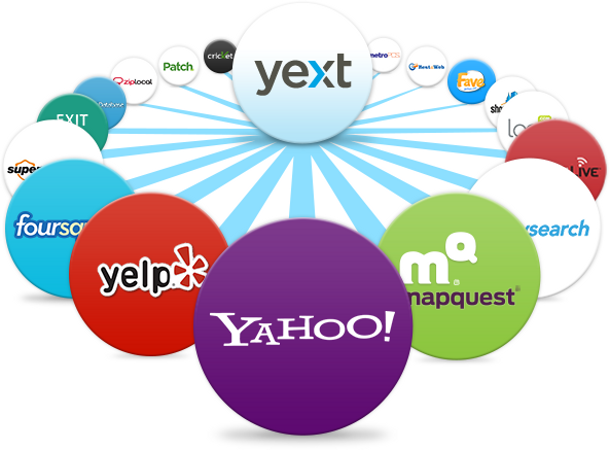
Zoom License Cost 2026: Which Plan Offers the Best Value for Your…
Table of Contents ToggleHow Yext See Itself In The SaaS SpaceYext...
Back
Back
Search for Keywords...
Blog

11/21/2016
Table of Contents
In a recent blog post, we shared how the Zylo team wanted to hear directly from other CEOs and CFOs think about SaaS in their own organizations. So we created a series of blog posts where we detail interviews from 5 veteran software executives and explore what they believe the future of cloud software will hold.
Each week for the next 3 weeks, we’ll share a portion of each of the interviews. In this week’s post, we’ll highlight Steve Cakebread, CFO of Yext, and will share what he believes the future of the subscription economy will look like. Miss last week’s recap? Check out what Amanda Lannert, CEO of Jellyvision had to say.
When Steve first started at Yext, there were few systems in place. Steve and the team had to put in a complete new set of Enterprise Resource Planning (ERP) solutions from a general ledger to reporting tools. Because of the magic of SaaS, they were able to do it with 3 consultants that visited the New York office just once per month. According to Steve, it’s no wonder SaaS is effective: it scales with businesses and the model doesn’t incur costs before it scales. In addition, he believes the user interfaces are typically much easier to adopt and learn than on-premise back office systems. Thanks to SaaS, what was accomplished in Yext’s early days with 3 consultants who did much of their work remotely would have required teams of people in the traditional on-premise software world.
Yext is scaling quickly, so one of the biggest benefits of SaaS for Steve is that all new global offices that the company is opening can have the same processes with the same data at the same time.
When it comes to Yext’s investment in technology, 100% of its systems are SaaS rather than traditional on-premise software. Steve and his team strive to get the business to run its technology on approximately 2-3% of revenue, but he would like to see systems cost around 1% of revenue as the business grows.
When it comes to making decisions about new technology, Steve commented that ROI is the age-old question:
“We’re really looking more at productivity and outcomes. For our team, it comes down to productivity, reliability, and accurate data all of the time. We’re always focused on reducing process cycle times to accomplish tasks as fast as possible. For example, all of our purchase orders go into a spend management SaaS solution, which automatically times-out after 6 hours if an order hasn’t been approved, in which case it goes to the next in line. You can’t run a business the antiquated way anymore where employees are always waiting on approvals. We need our employees to be incredibly productive with the time they have. At Yext, business acceleration is what really matters.”
When asked whether Yext will increase its spend on SaaS in the coming years, Steve frankly replied, “I don’t know that we can. We’re on EVERYTHING. Everything in this company is already SaaS.” Steve explained that while there are point solutions that will come up for every area of the business that could be valuable, he believes the current infrastructure at Yext will last the company to at least $5B, and the reason they’ll replace current systems is only for newer, more innovative solutions that come to the market.
Yext is in a unique position as they are a buyer of SaaS but they’re also a subscription-based company themselves. So when we asked Steve how he thinks that will impact the organization as buying options continue to increase, he explained that the more solutions available to the market, the more competitive the space will become, and the more innovative the solutions will be.
“It’s better for all of us. SaaS tends to be sticky, but if an organization has game-changing technology, then there are ways (through APIs) to migrate to the better solution. At Yext, we’ve certainly been adding features and functionality to our existing infrastructure that drive better productivity.”

Table of Contents ToggleHow Yext See Itself In The SaaS SpaceYext...

Table of Contents ToggleHow Yext See Itself In The SaaS SpaceYext...

Table of Contents ToggleKey Themes That Shaped SaaS Management in 20251....

Table of Contents ToggleHow Yext See Itself In The SaaS SpaceYext...
| Cookie | Duration | Description |
|---|---|---|
| cookielawinfo-checkbox-analytics | 11 months | This cookie is set by GDPR Cookie Consent plugin. The cookie is used to store the user consent for the cookies in the category "Analytics". |
| cookielawinfo-checkbox-functional | 11 months | The cookie is set by GDPR cookie consent to record the user consent for the cookies in the category "Functional". |
| cookielawinfo-checkbox-necessary | 11 months | This cookie is set by GDPR Cookie Consent plugin. The cookies is used to store the user consent for the cookies in the category "Necessary". |
| cookielawinfo-checkbox-others | 11 months | This cookie is set by GDPR Cookie Consent plugin. The cookie is used to store the user consent for the cookies in the category "Other. |
| cookielawinfo-checkbox-performance | 11 months | This cookie is set by GDPR Cookie Consent plugin. The cookie is used to store the user consent for the cookies in the category "Performance". |
| viewed_cookie_policy | 11 months | The cookie is set by the GDPR Cookie Consent plugin and is used to store whether or not user has consented to the use of cookies. It does not store any personal data. |
